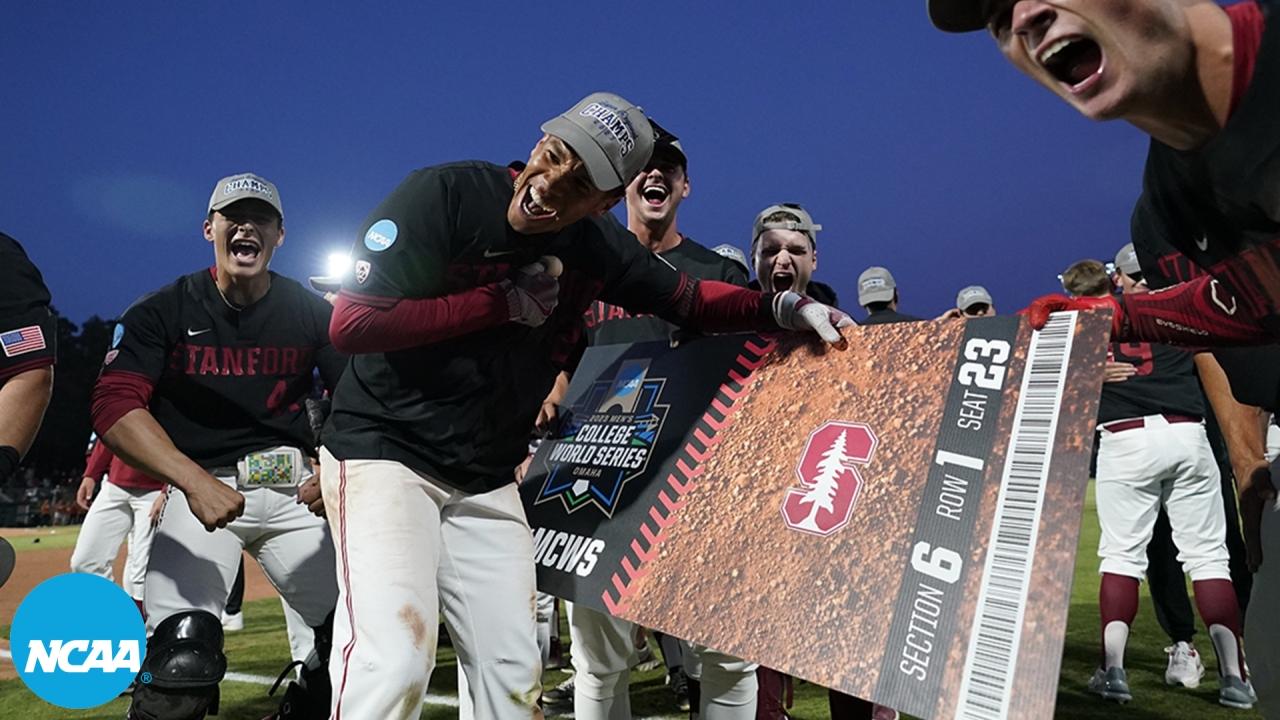Every year, the best teams in college baseball compete in the NCAA Division I baseball tournament, vying for the chance to play in Omaha at the Men's College World Series.
Here is how the NCAA Division I baseball tournament works, including the history and format.
What is the difference between the Division I baseball tournament and the Men's College World Series?
The NCAA Division I baseball tournament is a 64-team tournament in the spring. After two rounds of play (which each consist of multiple games), there are just eight teams left. These eight teams then head to Omaha, Nebraska, for the Men's College World Series. The MCWS is the culmination of the DI tournament, where the teams compete in two brackets, with the winners of each meeting in the MCWS finals, a best-of-three series to decide the NCAA champion.
When did the Men's College World Series start?
The first-ever NCAA Division I baseball tournament was in 1947, and would barely be recognized as the same tournament nowadays. The 1947 tournament featured just eight teams, which were divided into two four-team, single-elimination brackets. The two winners — California and Yale — then met in a best-of-three final in Kalamazoo, Michigan. California went undefeated through the inaugural CWS and beat Yale to capture the first title.
MCWS HISTORY: Coaches with most wins | Most titles | Most appearances | Conferences most represented
How has the NCAA Division I baseball tournament changed since its inception?
The tournament has grown a lot since 1947. There are currently 64 teams that compete in four rounds (two double-elimination brackets, two best-of-three series) for the title.
Here are the major changes to the tournament, as they happened:
- 1948: First-round playoffs were changed to double-elimination.
- 1949: The final was expanded to a four-team, double-elimination format, and the site changed to Wichita, Kansas.
- 1950: Site moves to Omaha, Nebraska.
- 1954: Field expands to 23 teams. The field size bounces around between 21 and 32 for the next two decades. In the 22 years between 1954 and 1975, the field is never the same size two years in a row.
- 1976: Field expands to 34 teams, where it will stay until 1982.
- 1982: Field expands to 36 teams. Will expand multiple times in the next few years, before settling at 48 teams in 1987, where it will stay until 1999.
- 1988-1998: The eight regional champions are seeded into two four-team brackets. Those two brackets play double-elimination with the bracket winners then meeting in a one-game championship.
- 1999: Field expands to current size of 64 teams, super regionals are added.
- 2003: CWS finals become a best-of-three series.
How are teams selected for the NCAA Division I baseball tournament?
Since 1954, the NCAA Division I baseball tournament field has been split into two qualifying groups: The automatic berths, and the at-large selections. Since 2014, that split sees 31 conference champions receive automatic berths, and 33 teams receive at-large bids, decided by the NCAA Division I Baseball Committee.
As part of that selection process, 16 teams receive national seeds, and are offered the option of hosting a super regional if they advance to the second round.
What is the format for the NCAA Division I baseball tournament?
There are four stages of competition for the tournament:
Regionals
The first round sees the 64 teams split into 16 brackets. Each is a double-elimination bracket with four teams, seeded 1-4. Double-elimination means that a team isn’t eliminated from the bracket until they lose two games.
Super Regionals
The 16 winners of the regionals move on to the super regionals, where they are split into eight pairings. These pairings play in a best-of-three series.
Men's College World Series
The eight winners of the super regionals head to the MCWS in Omaha. They are split into two double-elimination brackets, consisting of four teams each.
Men's College World Series Finals
The winners of the two MCWS brackets meet in the MCWS Finals, a best-of-three series to decide the NCAA champion.
When is the Men's College World Series?
The NCAA Division I baseball tournament starts after the culmination of the regular season, in late May or early June every year. The Men's College World Series, the final stage of the tournament, caps off the season in June.
You can see the bracket and schedule here.
How to get tickets for the Men's College World Series
Visit the tickets section on NCAA.com here for tickets.
Who has won the most Men's College World Series?
No team has won it more often than Southern California. The Trojans have 12 titles to their name, with the first coming in 1948, and the most recent in 1998. That also includes a stretch from 1968 to 1974, when USC won six of seven titles.
You can see the winners of every tournament here.







